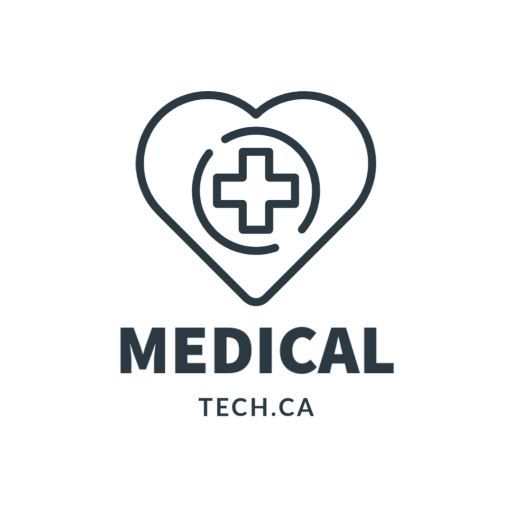
by medicaltechont | Oct 3, 2015 | eHealth
This is a great article on the real cost of EMR in Ontario!
How much does is cost to care for a baby, pregnant woman, diabetic, heart disease patient, or provide primary care among the myriad of other services offered by your family doctor? According to the Ontario Government, too much. According to you and me?
I am not about to rehash the many exemplary articles and blog posts that have so eloquently outlined the issues (see attached PDF). My focus is to ask you a single question: Are you getting value for what is spent on primary care health teams?
Read more: http://policyoptions.irpp.org/2015/09/26/the-real-cost-of-primary-care-in-ontario-a-fraction-of-the-cost-of-a-gym-membership/

by medicaltechont | Jun 13, 2015 | OntarioMD
Previously we mentioned that Jonoke was no longer listed as a certified OntarioMD vendor. It seems that there was a bit more to their story. As recently reported, their assets have been purchased by QHR in another EMR acquisition.
—————————————-
(RTTNews.com) – QHR Corp. (QHR.V), engaged in the healthcare information technology sector, said its wholly owned subsidiary QHR Technologies Inc. has entered into a binding agreement to purchase all of the healthcare assets of Jonoke Software Development Inc., including its proprietary Electronic Medical Record or EMR software and its clients.
—————————————-
We are now down to 9 vendors in Ontario, under the current certification offerings (not including Bell who will no longer offer an EMR after December 2015). If you are looking for information on the remaining offerings
click here. Hopefully more companies will get on board, giving medical professionals more choice in Ontario.

by medicaltechont | Mar 8, 2015 | Canada, United States
Technology entrepreneur Jonathan Bush says he was recently watching a patient move from a hospital to a nursing home. The patient’s information was in an electronic medical record, or EMR. And getting the patient’s records from the hospital to the nursing home, Bush says, wasn’t exactly drag and drop.
“These two guys then type — I kid you not — the printout from the brand new EMR into their EMR, so that their fax server can fax it to the bloody nursing home,” Bush says.
In an era when most industries easily share big, complicated, digital files, health care still leans hard on paper printouts and fax machines. The American taxpayer has funded the installation of electronic records systems in hospitals and doctors’ offices — to the tune of $30 billion since 2009. While those systems are supposed to make health care better and more efficient, most of them can’t talk to each other.
Bush lays a lot of blame for that at the feet of this federal financing.
“I called it the ‘Cash for Clunkers’ bill,” he says. “It gave $30 billion to buy the very pre-internet systems that all of the doctors and hospitals had already looked at and rejected,” he says. “And the vendors of those systems were about to die. And then they got put on life support by this bill that pays you billions of dollars, and didn’t get you any coordination of information!”
Click here to read more

by medicaltechont | Feb 14, 2015 | e-Health, Healthcare, OntarioMD
The RFQ was opened on November 6, 2014 and closed on December 3, 2014. The RFQ was posted on MERX, an electronic tendering service, and was open to all vendors (i.e., not limited to Canadian vendors).
Five respondents successfully completed Stage 1 and have qualified to participate in the next stage for detailed evaluation, validation and potential certification of their proposed ASP EMR offerings.
- AlphaGlobalIT (GlobeMed)
- Inidivica Inc. (IndiviCare)
- Intrahealth Canada Ltd. (Profile EMR)
- TELUS Health Solutions GP (TELUS Med Access EMR)
- York Card Technology Inc. (YMS EMR)
Stage 2 is expected to commence in March 2015
Read more

by medicaltechont | Feb 14, 2015 | United States
Modernizing Medicine, creator of the Electronic Medical Assistant (EMA), a cloud-based, specialty-specific electronic medical record (EMR) system, on January 29 responded to recent announcements from the Centers for Medicare & Medicaid Services (CMS), the U.S. Department of Health & Human Services (HHS) and leading health insurers, regarding the concerted push away from fee-for-service healthcare models in favor of outcome-based reimbursements.
CMS has announced that 85 percent of Medicare payments in 2016 could be based on quality of care, and that number could grow to 90 percent in 2018. Additionally, a UnitedHealth Group executive was reported to have said that the company plans to increase value- based payments to doctors and hospitals by 20 percent this year, forecasting over $40 billion in payments tied to value or quality of care.
“This major shift in payment models requires the right tools and reporting systems if physicians and provider organizations want to safeguard against penalties from volume-based medicine and benefit from related incentives,” said Modernizing Medicine’s CEO and Co- founder Dan Cane in a statement issued following the recent announcements from CMS and HHS. “Modernizing Medicine is deeply committed to the physicians and healthcare professionals we serve, and we believe that health information technology vendors share a large part of the responsibility to ease the impending transition toward quality reporting and outcomes-based reimbursements.”
Unlike EMRs using templates or macros, EMA was designed with unique structured data technology that handles the Value-based Payment Modifier and enables quality reporting including Physician Quality Reporting System (PQRS) program reporting. Cane believes Modernizing Medicine is in a market leading position in providing a system that addresses this burden for physicians, enabling them to focus on practicing medicine without fear of the upcoming changes.
Read more






